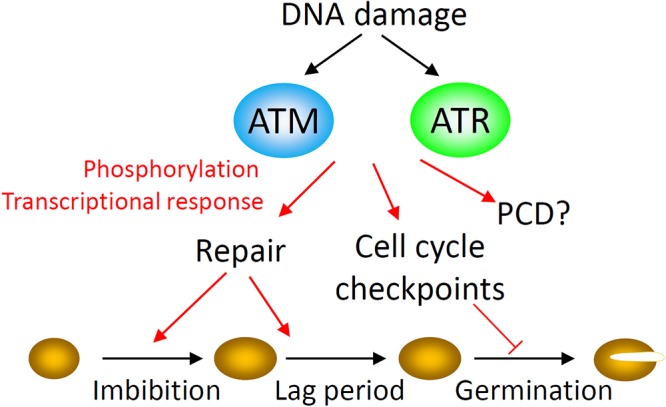Figure 2.

The DNA damage response (DDR) in seeds. The DNA damage response executes a coordinated network of responses in order to minimize the consequences of genome damage to the cell, including activation of cell cycle checkpoints, DNA repair factors, and programmed cell death (PCD). The master kinases ATAXIA TELANGIECTASIA MUTATED (ATM) and ATM AND RAD3-RELATED (ATR) control the cellular response to DNA damage in eukaryotes through activation of downstream responses at the transcriptional and post-transcriptional levels. ATM controls advancement of germination in aged seeds, in part through transcriptional control of the cell cycle inhibitor SIAMESE RELATED 5 (SMR5). Both ATM and ATR influence seed viability but the molecular mechanism is unknown. In plants the transcriptional DDR encompasses hundreds of genes encoding proteins involved in DNA repair, chromatin remodeling and DNA metabolism. In the early stages of imbibition, seeds exhibit a large and rapid ATM-dependent transcriptional DNA damage response early in imbibition. DNA repair synthesis is detectable from the earliest stages of imbibition. As seed aging progresses and radicle emergence is delayed, this lag phase to germination is accompanied by an ATM-mediated delay of cell cycle activation in the root apical meristem (RAM) and extension of DNA repair activities.
